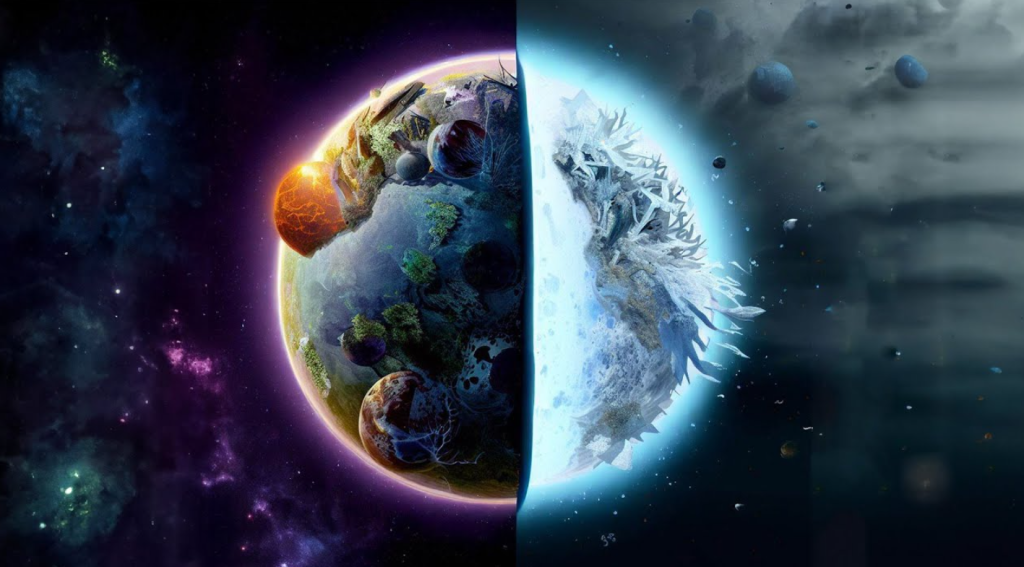A tidally locked planet is one where one side is always facing its star, while the other remains in perpetual darkness. This unique configuration creates a range of extreme environmental conditions, offering a fascinating opportunity to explore how alien life could evolve. The most likely area for life to exist on such a planet is the narrow band between the day and night sides, known as the Terminator or Twilight Zone. In this region, temperatures may be moderate, allowing liquid water to exist and creating a more stable environment for life.
Life in the Twilight Zone could have special adaptations to thrive in the constant low-light conditions. Animals might evolve sensitive eyes or other light-sensing organs to help them navigate and find food. Some creatures could even develop bioluminescence for communication, mating, or attracting prey, lighting up the twilight landscape with glowing life forms. Plants or photosynthetic organisms might also adapt by developing large or efficient light-capturing structures, optimizing their ability to absorb the limited sunlight.

On the star-facing side of the planet, extreme temperatures and intense radiation could lead to the rise of extremophiles—organisms able to survive harsh environments. These organisms may have heat-resistant proteins or other protective molecules to shield their DNA, allowing them to thrive under constant sunlight. Some could even use solar radiation as an energy source, similar to how Earth’s plants perform photosynthesis, leading to potentially productive ecosystems.
The dark side of the planet presents its own challenges. The perpetual darkness and cold might make surface life unfeasible. However, geothermal activity beneath the surface could provide a reliable heat source. Subsurface life forms might rely on chemosynthesis, using chemical reactions from geothermal vents to produce energy, much like Earth’s deep-sea hydrothermal vent ecosystems. These organisms might be adapted to the cold, with antifreeze proteins or unique metabolic processes to survive in low temperatures.
In addition, life forms on a tidally locked planet could take to the skies. With a thick atmosphere, creatures might evolve to float or fly, taking advantage of atmospheric currents. These life forms could have gas-filled sacs or hollow bones to stay aloft, using wings or fins to swim through the air. They could feed on airborne particles, such as dust or water vapor, and might even be able to adjust their buoyancy to move between different layers of the atmosphere.
As conditions change, life forms could adapt or migrate between environments. Some might develop seasonal behaviors, such as growing thicker fur during colder periods or entering hibernation. Others could migrate between the day and night sides in search of more favorable conditions. These migrations could shape unique predator-prey dynamics and ecosystem interactions.
In a tidally locked world, symbiotic relationships could play an important role in survival. Heat-resistant organisms on the day side might offer shelter to cold-tolerant species from the night side, while the latter might provide nutrients in return. Photosynthetic organisms could also form mutualistic partnerships with consumers, where the consumers protect the producers or help disperse their seeds in exchange for food.
The potential for life on a tidally locked planet is vast, and how life might evolve would depend on the specific conditions and resources available. These intriguing possibilities illustrate just how diverse and adaptable life in the universe could be.